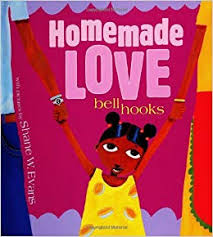Patchwork Paths and Homemade Love
Listen to the Recess! Clip
| Author | John Cech |
| Air Date | 2/22/2005 |

Patchwork Paths and Homemade Love Transcript
In her new picture book, The Patchwork Path, A Quilt Map to Freedom, Bettye Stroud tells the story of a young African American girl, Hannah, and her father who escape from slavery in the pre-Civil-War American South. Hannah’s mother has died, but she has left her daughter a legacy of powerful symbols that serve to guide her — signs that she has created with her own hands for her daughter. As we learn in the story, through the strongly crafted illustrations of Erin Susanne Bennett, Hannah and her father follow the code that was sewn into the quilts that enslaved Africans made and used for directions, warnings, reminders. Before they escape, for example, they hang out a quilt with the monkey wrench pattern, that lets the other slaves on the plantation know that they are leaving. And on their long flight north to Canada, their journey is marked by other moments when the symbols of the quilt correspond with the actions they must take: the wiggly seams of the drunkard’s path caution them not to travel in a straight line; shoofly tells them to go in different directions if they are pursued; the star shape is the key to a celestial map. This complex iconography was passed from mother to daughter for generations, along with the art of quilting, which was an African-American invention. Fittingly, we learn from the book’s Afterward that Ms. Stroud’s narrative comes from the living, breathing oral tradition. It was part of the secret family heritage of the famed quilter, Ozella McDaniel Williams, who first shared the story in 1999 — and thus provided the materials that could transform Hannah’s harrowing journey into the tapestry of hope and courage that this book displays, proudly and movingly, in the sunlight today.
Another piece of hand-crafted wonderment is waiting for the reader in bell hooks’ new book, Homemade Love, with pictures by Shane W. Evans. This is a little girl’s poem about her life, which is ringed round with the love she feels for her parents, and they for her. “My mama calls me girlpie, her sweet sweet,” the book begins, in a romp of joyous, jazzy colors and lyrical long, brown limbs, laughing eyelashes, and gentle eyes as we quickly meet the little girl, her mother, and her father whom she calls “honey bun chocolate dew drop.” Everything in her world is “all good good.” Most of the time. But even when things go wrong, she knows that, in her family,
. . . all the time
any hurt can be healed.
All wrongs forgiven. And all the
world made peace again.
It’s a child’s poem for all of us to memorize and keep close to our hearts. All our hearts.